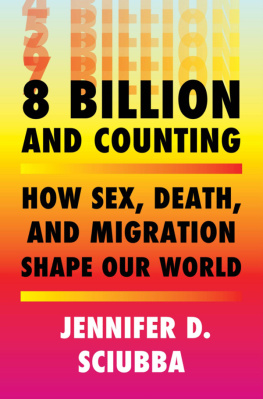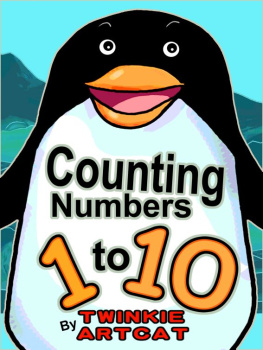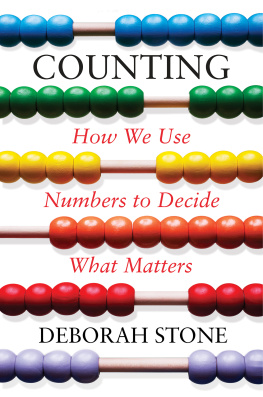Jennifer D. Sciubba - 8 Billion and Counting
Here you can read online Jennifer D. Sciubba - 8 Billion and Counting full text of the book (entire story) in english for free. Download pdf and epub, get meaning, cover and reviews about this ebook. year: 2022, publisher: W. W. Norton & Company, genre: Politics. Description of the work, (preface) as well as reviews are available. Best literature library LitArk.com created for fans of good reading and offers a wide selection of genres:
Romance novel
Science fiction
Adventure
Detective
Science
History
Home and family
Prose
Art
Politics
Computer
Non-fiction
Religion
Business
Children
Humor
Choose a favorite category and find really read worthwhile books. Enjoy immersion in the world of imagination, feel the emotions of the characters or learn something new for yourself, make an fascinating discovery.
- Book:8 Billion and Counting
- Author:
- Publisher:W. W. Norton & Company
- Genre:
- Year:2022
- Rating:5 / 5
- Favourites:Add to favourites
- Your mark:
- 100
- 1
- 2
- 3
- 4
- 5
8 Billion and Counting: summary, description and annotation
We offer to read an annotation, description, summary or preface (depends on what the author of the book "8 Billion and Counting" wrote himself). If you haven't found the necessary information about the book — write in the comments, we will try to find it.
8 Billion and Counting — read online for free the complete book (whole text) full work
Below is the text of the book, divided by pages. System saving the place of the last page read, allows you to conveniently read the book "8 Billion and Counting" online for free, without having to search again every time where you left off. Put a bookmark, and you can go to the page where you finished reading at any time.
Font size:
Interval:
Bookmark:

AND COUNTING

How Sex, Death,
and Migration
Shape Our World
JENNIFER D. SCIUBBA

To all of my teachers, especially my mom, my first teacher
A t the dawn of the Current Era, in Year 1 of the Western calendar, there were about 300 million people on the planet, a tiny fraction of the 47 billion who had ever been born. For our early human ancestors, life was poor, nasty, brutish, and short. In their brief lives, women in these primitive societies probably had well over four children on average, but many of these women starved before they could complete their reproductive years; up to half of babies died in infancy, and life expectancy at birth was a measly 10 years. In this nascent stage of human history, our population growth was similar to that of other species, where natureabysmal living conditions and rampant diseasechecked population growth. But humans are unique among species, and as our societies evolved, we began to accumulate knowledge about how to conquer nature. Those alive in 1750 were less than 1 percent of humans ever born. The almost 8 billion of us alive today represent around 7 percent of the 108 billion who have ever taken a breath. Clearly, tremendous forces have been at work to reshape global population from cradle to grave. And these forces will be no less powerful in the future.
If this were a story about demographic change in the twentieth century, it would be a story about exponential population growth. It took from the beginning of our species until around 1804 for Earth to have its first 1 billion people, and in the nineteenth century we didnt add too many more. But in the span of just 100 years during the twentieth century, world population exploded from 1.6 billion to 6.1 billion people.
The story of the twenty-first century is less a story about exponential population growth than it is a story about differential growthmarked by a stark divide between the worlds richest and poorest countries. Weve come remarkably far, but in the twenty-first century the worlds population is still changing in ways never before seen. Today, there are more people on the planet than ever, the most aged societies in human history, and the widest gulf in life expectancy between rich and poor countries.
These population trends arent just interesting in their own right; they also provide insight into some of the worlds most pressing problems. When we understand population trends, we better grasp how dynamics of violence and peace, of repression and democracy, and of poverty and prosperity are likely to play out on a global scale. As the pages of this book will show, how many people are on the planet is far less important for issues of development and conflict than where and who these people are. Meaning, where population growth and decline are concentratedeither at the country level or within countriesand the characteristics of those populations are the real links between demographics and political, social, or economic outcomes.
How wide are the gulfs in fertility and mortality between countries? On average, there are about 240 babies born per minute in the worlds least developed countries but only 25 born per minute in developed countries. If we were to go to the heart of the Japanese countryside, we would likely see a lot of gray hair50 percent of Japans population is over the age of 48, the worlds oldest. Japan is aging so rapidly that if current trends continue, the nation could eventually disappear altogether. Officially, the Japanese government projects that Japans population will shrink from 128 million in 2010 to 87 million by 2060. At that time, an astonishing 40 percent of Japanese will be 65 years or older. This is unprecedented in human history.
If we were to go to the crowded urban areas of Lagos, Nigeria, though, we would likely be inundated with the sounds of children playing. With a median age of 18 years, Nigeria is on the other end of the spectrum. Fully half of Nigerias population is children and adolescents. These huge cohorts will soon be mothers and fathers themselvesthe eldest of them already are. With its young population and high fertility, Nigeria, simultaneously an engine of African economic growth and operating grounds for the violent jihadist group Boko Haram, is set to eclipse US population by 2050, when it will reach more than 400 million peopledouble what it is todayeven with one of the highest infant mortality rates in the world.
World population will keep growing in the twenty-first century, but an astounding 98 percent of that growth will be in less developed countries like Nigeria. shows the 10 most populous countries in the years 2000, 2020, and 2050. One obvious shift during this 50-year span is that the most developed countries fall off the list, with the exception of the United States, which had near-replacement fertility and robust immigration until recently. By 2020, Japan had already dropped to the 11th spot, while the Democratic Republic of the Congo and Ethiopia were set to take places vacated by Russia and Mexicoa clear geographic shift in global population centers. Tremendous population growth in less developed countries during this half century is also clear. Between now and 2050, India will add the near equivalent of the US population, even as fertility declines there.
Figure 1. Ten Most Populous Countries: 2000, 2020, and 2050
2000 | 2020 | 2050 | ||||
Rank | Country | Population (millions) | Country | Population (millions) | Country | Population (millions) |
China | 1,283 | China | 1,439 | India | 1,659 | |
India | 1,053 | India | 1,380 | China | 1,364 | |
United States | United States | Nigeria | ||||
Indonesia | Indonesia | United States | ||||
Brazil | Pakistan | Indonesia | ||||
Russia | Brazil | Pakistan | ||||
Pakistan | Nigeria | Brazil | ||||
Bangladesh | Bangladesh | Bangladesh | ||||
Japan | Russia | Democratic Republic of the Congo | ||||
Nigeria | Mexico | Ethiopia |
The diversity of global population trends means theres a lot to wrap our heads around. In some regions, population pressures are blowing the top off of a pot already boiling with poor governance, civil war, and environmental devastation. At best, theres only dim hope for a peaceful future. When the pot boils over, countries across the globe feel the effects in the form of refugees and terrorist extremism.
Font size:
Interval:
Bookmark:
Similar books «8 Billion and Counting»
Look at similar books to 8 Billion and Counting. We have selected literature similar in name and meaning in the hope of providing readers with more options to find new, interesting, not yet read works.
Discussion, reviews of the book 8 Billion and Counting and just readers' own opinions. Leave your comments, write what you think about the work, its meaning or the main characters. Specify what exactly you liked and what you didn't like, and why you think so.











